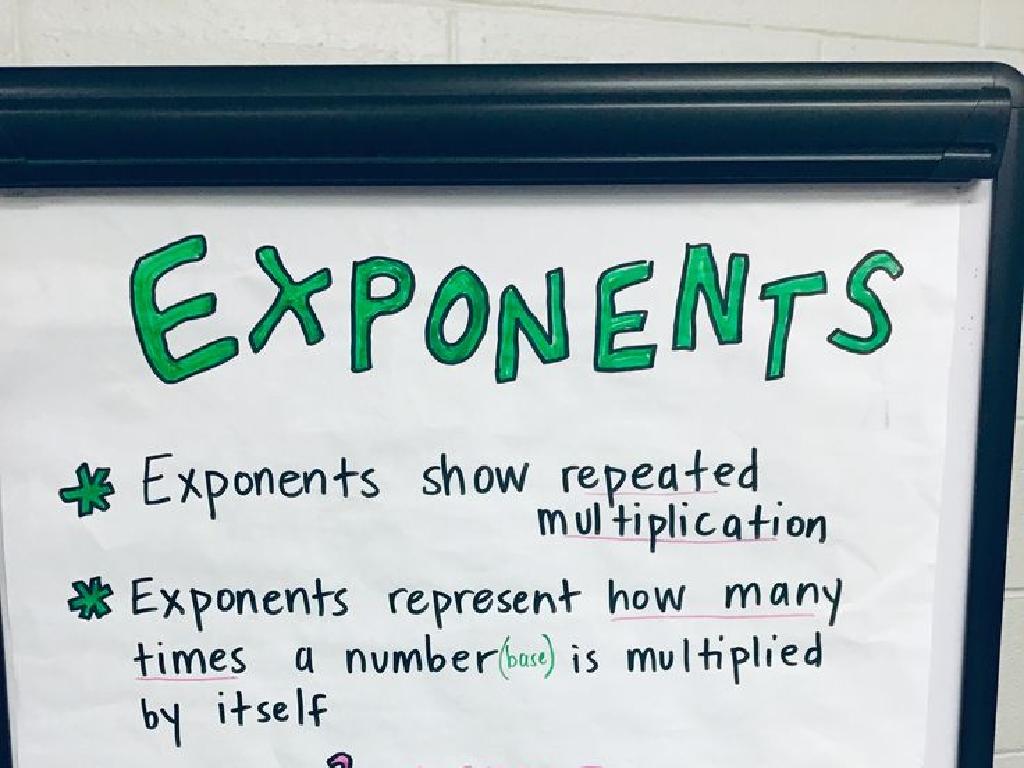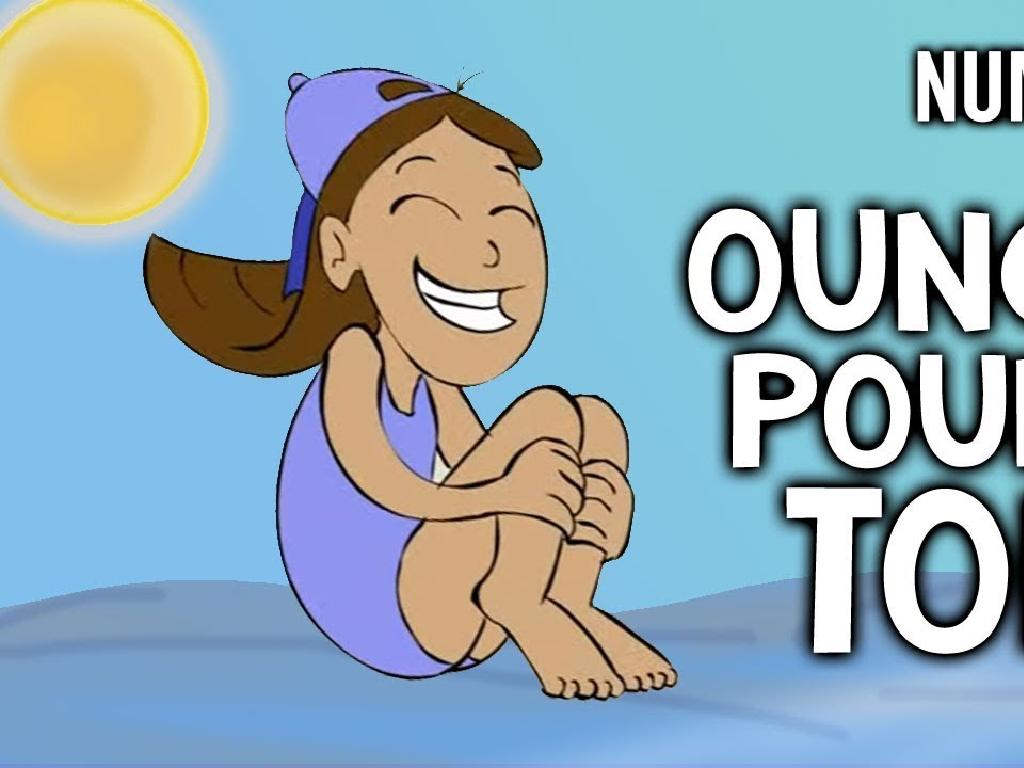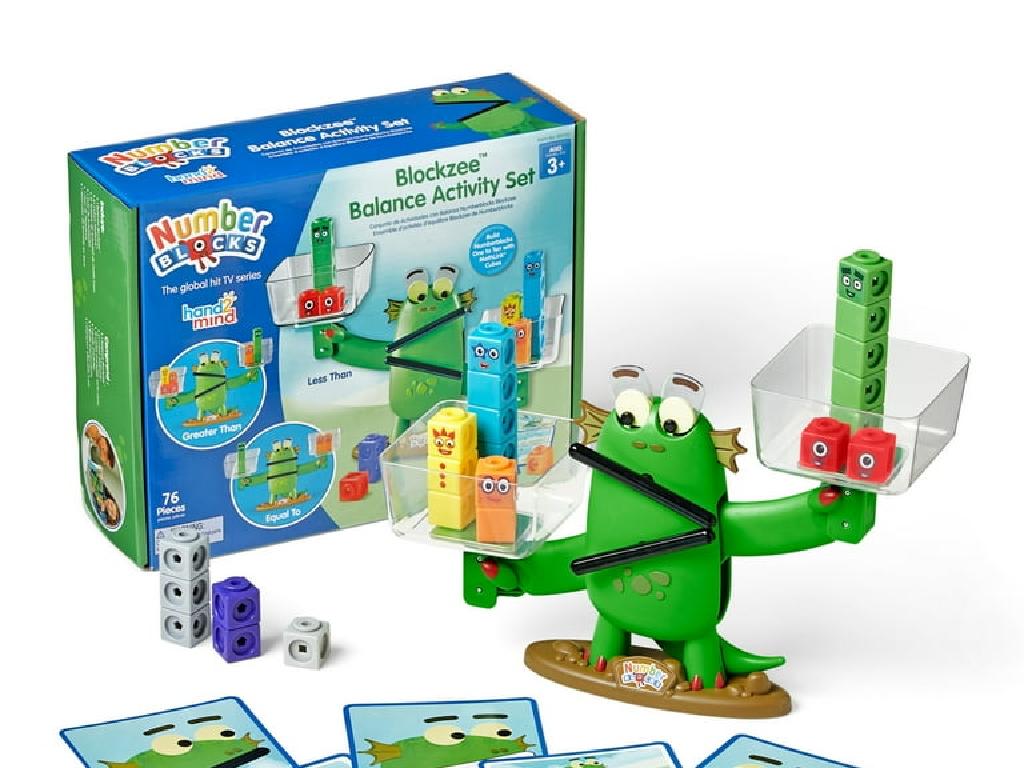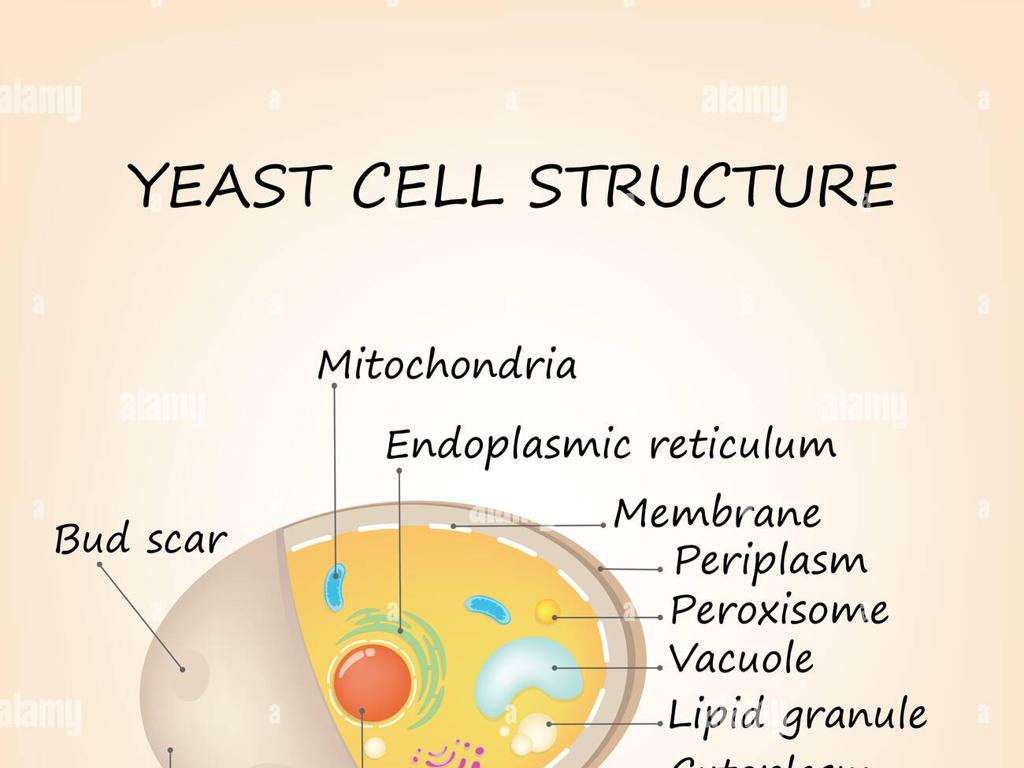Classify Matter As Solid, Liquid, Or Gas
Subject: Science
Grade: First grade
Topic: States Of Matter
Please LOG IN to download the presentation. Access is available to registered users only.
View More Content
Exploring States of Matter
– Matter comes in different forms
– Solids: Hard and keep their shape
– Examples: Rocks, ice, and toys
– Liquids: Wet and can flow
– Examples: Water, milk, and juice
– Gases: Invisible and all around us
– Examples: Air we breathe, steam
|
This slide introduces the concept of states of matter to first graders. Begin by explaining that everything around us is made of matter and that matter can be in different forms. Use tangible examples for solids like rocks or toys, which they can touch and feel. For liquids, reference everyday fluids like water or milk, highlighting their ability to be poured and take the shape of their containers. For gases, discuss air, which is all around but cannot be seen. Encourage students to think of examples from their own experiences and be ready to discuss these in the next class. The goal is to make them aware of the physical states that matter can exist in and to relate this information to their everyday lives.
Exploring States of Matter
– Matter is everything around us
– Made of tiny particles called atoms
– Matter comes in solid, liquid, gas
– Examples: Ice (solid), Water (liquid), Steam (gas)
– Water can be ice, liquid water, or steam
|
This slide introduces the concept of matter and its different states to first-grade students. Begin by explaining that everything they can touch and see is made up of matter, including themselves. Simplify the concept of atoms as very small particles that make up matter. Highlight the three main states of matter: solid, liquid, and gas, using water as a relatable example. Explain that water can exist as ice (solid), liquid water (liquid), and steam (gas), depending on the temperature. Encourage students to think of other examples of each state of matter in their daily lives. This will help them understand that the states of matter are part of their everyday experience.
Exploring Solids in States of Matter
– Solids keep their own shape
– Like a brick or a toy, they stay the same shape
– Solids do not flow like liquids
– They have a fixed volume
– They stay the same amount, like a bar of chocolate
– Solids don’t change shape easily
– A book or a table won’t bend or squish easily
|
This slide introduces the concept of solids to first graders by focusing on their physical properties. Emphasize that solids have a definite shape that does not change unless force is applied. They do not flow like liquids or gases and maintain the same volume. Use tangible examples like a rock, an ice cube, and an apple to illustrate these points. Encourage students to think of other solids in the classroom or at home and discuss why they are solids. This will help them understand the concept of solids in the context of their everyday lives.
Exploring Liquids: A State of Matter
– Liquids flow easily
– They fit the shape of containers
– Like water in a cup or a bottle
– Liquids have a set volume
– They can’t be squished smaller
– Examples: water, juice, milk
– Common liquids we drink
|
This slide introduces the concept of liquids to first graders, emphasizing their ability to flow and take the shape of their containers. It’s important to convey that while liquids can change shape, they cannot change their volume; they can’t be compressed into a smaller space. Use relatable examples such as water, juice, and milk to illustrate these properties. Demonstrate with a hands-on activity by pouring water into different shaped containers to show how it changes shape but not volume. Encourage the students to think of other examples of liquids and discuss their observations of liquids in their daily lives.
Exploring Gases: A State of Matter
– Gases are invisible
– Gases fill up spaces
– Like when a balloon gets big
– Examples of gases
– Air in balloons, steam from hot water
– Gases in our lives
– We breathe in air, which is a gas
|
This slide introduces the concept of gases to first graders, emphasizing their presence around us and their ability to fill spaces. Begin by explaining that gases are a type of matter that we can’t always see, like the air we breathe. Use a visual example such as a balloon inflating to demonstrate how gases expand to fill up the space inside it. Provide relatable examples like air in a balloon and steam from a kettle to help students identify gases in everyday life. Encourage students to think about and share other examples of gases they might encounter daily. The goal is to make them aware of gases and their properties in a simple and engaging way.
Changing States of Matter
– Matter changes with heat or cool
– Heat makes things melt, cool makes them hard
– Water: ice, liquid, and steam
– Ice melts to water, water boils to steam
– Fun experiment next class!
– We’ll watch water change states together!
|
This slide introduces the concept that matter can change states when heated or cooled, using water as a relatable example. Explain that when water is cold, it becomes solid ice, when it’s at room temperature, it’s a liquid, and when it’s heated, it turns into steam, a gas. Prepare a simple experiment for the next class where students can observe water changing from solid to liquid to gas. This will help them understand the concept of matter changing states. Make sure to have safety precautions in place for the experiment, and prepare to explain the process step by step.
Class Activity: Observing Matter Change!
– Watch ice melt into water
– Heat water to see steam
– Predict changes from heat
– What happens when ice gets warm?
– Record our observations
– Use your science journal to draw and write what you see
|
This class activity is designed to help first-grade students understand the states of matter through direct observation. By watching ice melt into water and then heating the water to produce steam, students will visually grasp the concept of matter changing states from solid to liquid to gas. Encourage them to make predictions before the experiment and to carefully observe the changes that occur. Provide each student with a science journal to record their observations, either through drawings or simple sentences. This hands-on experience will reinforce their understanding of the states of matter and the effects of temperature change. Possible activities for different students could include drawing the different states, describing the process in their own words, or touching the ice and water to feel the temperature change.
Exploring States of Matter: Conclusion
– Great job learning states of matter
– Matter exists in different states
– Matter is everywhere in various forms
– Review: solids, liquids, and gases
– Solids: hard and keep their shape, Liquids: flow and fill containers, Gases: spread out to fill space
|
Congratulations to the class for their hard work in understanding the states of matter. Reinforce the concept that matter, which makes up everything in the world, can exist as solids, liquids, or gases. Emphasize the characteristics of each state: solids have a fixed shape, liquids take the shape of their container, and gases fill the entire space available to them. Encourage the students to observe objects around them at home or in school and identify their state of matter. This will help solidify their understanding of the concept and its relevance to their everyday lives.
Class Activity: Matter Sorting Game
– Play a sorting game with objects
– Decide: solid, liquid, or gas?
– Work together in teams
– Have fun learning about matter!
|
This slide introduces a class activity designed to help first graders understand the concept of states of matter through a hands-on sorting game. Provide a variety of objects for the students to classify as solids, liquids, or gases. Encourage teamwork as they discuss and decide the state of each object. Possible objects for the activity could include rocks (solid), water (liquid), and balloons (gas). The goal is for students to have fun while engaging with the material and reinforcing their understanding of the different states of matter. Make sure to walk around the classroom to assist and guide the students as they work through the activity.






